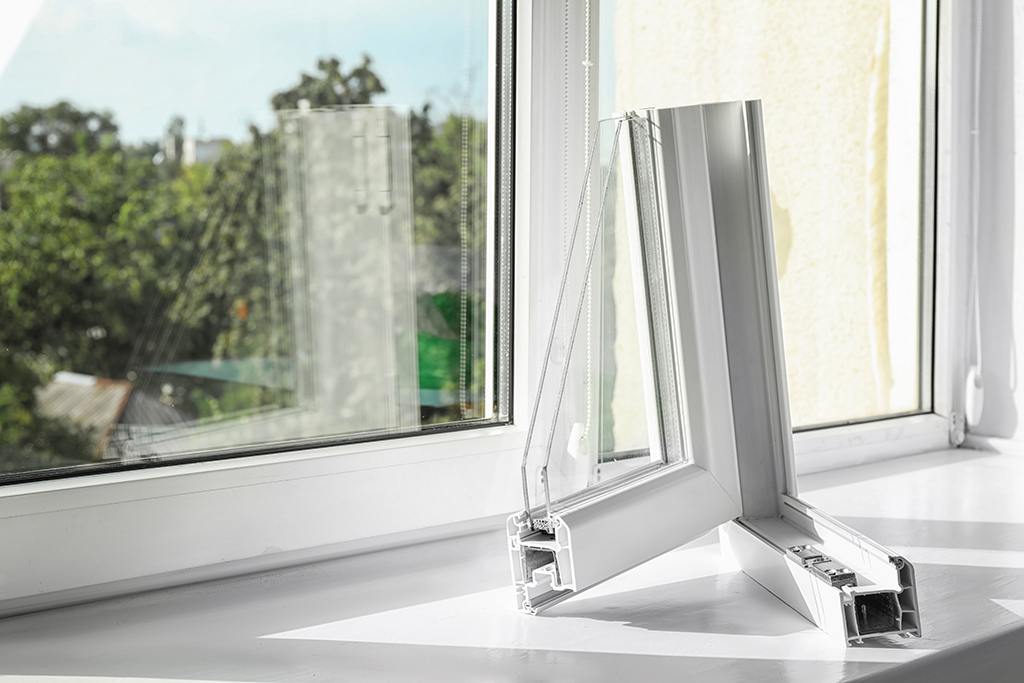
Blemishes and Scratches in Double Glazed Units: Understanding Acceptable Standards According to the GGF in the UK

Blemishes and Scratches in Double Glazed Units: Understanding Acceptable Standards According to the GGF in the UK
Introduction:
Double glazed units have become a popular choice for homeowners in the UK due to their energy efficiency, noise reduction, and improved insulation. However, like any other product, they can occasionally have blemishes and scratches. In this blog, we will explore what blemishes and scratches are considered acceptable according to the Glass and Glazing Federation (GGF) guidelines in the UK.
Understanding Blemishes and Scratches:
Blemishes and scratches are imperfections that can occur during the manufacturing, transportation, or installation of double glazed units. These flaws can range from minor surface marks to more noticeable defects that affect the overall aesthetics and functionality of the unit.
Acceptable Standards According to the GGF:
The GGF is the leading trade association representing the glass and glazing industry in the UK. They have established guidelines that define acceptable levels of blemishes and scratches in double glazed units. These standards aim to strike a balance between meeting customer expectations and allowing for reasonable manufacturing variations.
1. Blemishes:
According to the GGF guidelines, blemishes are categorized into three levels: Level 1, Level 2, and Level 3. Each level represents a different degree of acceptability based on the visibility and impact of the blemish.
- Level 1: Blemishes are not readily visible during normal viewing conditions and do not detract from the overall appearance.
- Level 2: Blemishes are visible upon close inspection but do not significantly affect the overall appearance.
- Level 3: Blemishes are noticeable during normal viewing conditions and may affect the overall aesthetics.
The acceptable level of blemishes can depend on the type of glass, location within the unit, and the distance of the blemish from the unit's edge or sightline.
2. Scratches:
Scratches are assessed differently from blemishes, as they can potentially weaken the structural integrity of the glass. The GGF distinguishes between minor and major scratches based on their length and depth.
- Minor Scratches: Scratches that are less than 25mm in length and 0.25mm in depth are considered acceptable.
- Major Scratches: Scratches that exceed the above measurements or are deep enough to be felt by running a fingernail over them are considered unacceptable.
It's important to note that visible scratches on the external surface of the unit are generally considered unacceptable, as they can impact the overall appearance and reduce the clarity of the glass.
Conclusion:
Understanding the acceptable standards for blemishes and scratches in double glazed units is crucial for both manufacturers and homeowners. The GGF guidelines provide a framework for assessing and addressing these imperfections. While minor blemishes and scratches may be deemed acceptable, it is essential for homeowners to communicate their expectations and concerns with their suppliers or installers to ensure their satisfaction with the final product.
Remember that the GGF guidelines are subject to change and it's always recommended to consult the latest version or seek professional advice to ensure compliance with current industry standards. By being knowledgeable about acceptable standards, homeowners can make informed decisions and maintain realistic expectations when it comes to the appearance and quality of their double glazed units.
Introduction:
Double glazed units have become a popular choice for homeowners in the UK due to their energy efficiency, noise reduction, and improved insulation. However, like any other product, they can occasionally have blemishes and scratches. In this blog, we will explore what blemishes and scratches are considered acceptable according to the Glass and Glazing Federation (GGF) guidelines in the UK.
Understanding Blemishes and Scratches:
Blemishes and scratches are imperfections that can occur during the manufacturing, transportation, or installation of double glazed units. These flaws can range from minor surface marks to more noticeable defects that affect the overall aesthetics and functionality of the unit.
Acceptable Standards According to the GGF:
The GGF is the leading trade association representing the glass and glazing industry in the UK. They have established guidelines that define acceptable levels of blemishes and scratches in double glazed units. These standards aim to strike a balance between meeting customer expectations and allowing for reasonable manufacturing variations.
1. Blemishes:
According to the GGF guidelines, blemishes are categorized into three levels: Level 1, Level 2, and Level 3. Each level represents a different degree of acceptability based on the visibility and impact of the blemish.
- Level 1: Blemishes are not readily visible during normal viewing conditions and do not detract from the overall appearance.
- Level 2: Blemishes are visible upon close inspection but do not significantly affect the overall appearance.
- Level 3: Blemishes are noticeable during normal viewing conditions and may affect the overall aesthetics.
The acceptable level of blemishes can depend on the type of glass, location within the unit, and the distance of the blemish from the unit's edge or sightline.
2. Scratches:
Scratches are assessed differently from blemishes, as they can potentially weaken the structural integrity of the glass. The GGF distinguishes between minor and major scratches based on their length and depth.
- Minor Scratches: Scratches that are less than 25mm in length and 0.25mm in depth are considered acceptable.
- Major Scratches: Scratches that exceed the above measurements or are deep enough to be felt by running a fingernail over them are considered unacceptable.
It's important to note that visible scratches on the external surface of the unit are generally considered unacceptable, as they can impact the overall appearance and reduce the clarity of the glass.
Conclusion:
Understanding the acceptable standards for blemishes and scratches in double glazed units is crucial for both manufacturers and homeowners. The GGF guidelines provide a framework for assessing and addressing these imperfections. While minor blemishes and scratches may be deemed acceptable, it is essential for homeowners to communicate their expectations and concerns with their suppliers or installers to ensure their satisfaction with the final product.
Remember that the GGF guidelines are subject to change and it's always recommended to consult the latest version or seek professional advice to ensure compliance with current industry standards. By being knowledgeable about acceptable standards, homeowners can make informed decisions and maintain realistic expectations when it comes to the appearance and quality of their double glazed units.


